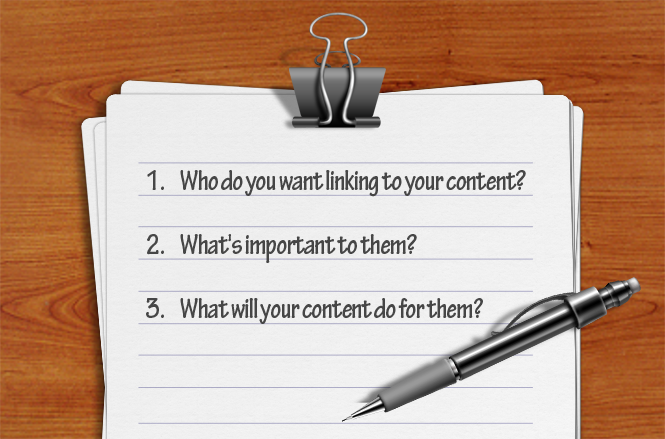If you’re wondering how email marketing can boost your business, you’re not alone. Plenty of savvy business minds have pondered that question. VerticalResponse is here to get you the answers you need.
Like any smart business owner, you want to know the benefits of email marketing. There’s a whole list of benefits, which we’ll cover here, but one of the most compelling reasons to use email marketing is its return on investment (ROI).
According to the Direct Marketing Association, email marketing brings in about $40 for every $1 you spend. That’s one of the highest ROIs for any type of marketing.
While that statistic is impressive, we know you desire more information to make an informed decision, so we turned to Jill Bastian, our Community Education and Training Manager. With her help, we’ve outlined five ways that email marketing can help your business.
1. Email marketing can increase sales
You want your email efforts to pay off in sales. By sharing information about your business through emails, you help customers see how valuable your product or service is, Bastian says. That leads to money in the cash register.
What kinds of emails bring in the most sales? The best way to increase sales through email marketing is to send a variety of emails to your customers, but there are a few types of emails that generally help drive sales more than others:
Promotional email
Nothing entices a customer more than a great deal. Your customer saves a few bucks and your bottom line gets a boost. Not bad, right? Keep in mind, promotional emails aren’t reserved for only things like, “Don’t miss our 50% off sale.” A promotional email can offer other perks too, like free shipping or a free product trial. For example, J.Crew offered free shipping in this email.
New arrival email
When a hot new item, service or update arrives at your store, an email spreads the word about this must-have product. In the email, include a link so shoppers can make a purchase instantly. Electronics giant, Apple, does this with its new products. Check out the example below.
While these emails can boost sales, you can’t sell 24/7. Your customers want more than that. Every email you send can get customers one-step closer to making a purchase, which is why a variety of emails is the best strategy. Emails help you build trust, establish a relationship, and improve brand awareness – all of which play a role in the purchasing process.
2. Emails keep your business top of mind
Email marketing can help your product or business remain top of mind to your consumers. Emails serve as gentle reminders about your business. Let’s say you run an auto body shop and regularly email your customers promotions and car maintenance tips. When Susie gets in a fender bender, your business springs to mind because of your consistent emails. As a result, Susie heads to your shop for repairs. Emails help you stay in front of your customers on a regular basis, Bastian says.
What kinds of emails keep your business top of mind? There are several actually. These emails are more about staying in touch with customers and less about selling. Here are a few examples:
Newsletters
A company newsletter is a great way to update your customers about your business. The sky’s the limit for newsletter content. You can offer small history lessons about your business, talk about upcoming events, highlight employees, or offer industry-specific news and tips. The newsletter below even offers free downloads.

A holiday email
When a holiday rolls around, you can send your customers a holiday email. It can be a three-sentence email that wishes everyone a Happy New Year, or a colorful banner that celebrates the Fourth of July and offers customers a discount. It can be a nontraditional holiday, too. Either way, a holiday is a good reason to reach out to your customers.

3. Keep customers coming back with regular emails
Emails help you build a lasting relationship with your customers. You don’t just want one-time customers; you want loyal customers who keep coming back again and again. Email marketing can make that goal a reality. By regularly reaching out to your customers, you encourage them to make another purchase. Just like bumping into a friend on the street can lead to meeting up for drinks later, an email works the same way. The email is the spontaneous meeting, and a purchase is the result.
What kinds of emails keep repeat business booming? Again, a variety is best, but there are few emails, in particular, that help bring customers back into the sales cycle.
Reorder emails
If you have a product or service that is consistently needed, a reorder email is an excellent way to remind customers that it’s time to purchase. For instance, if you sell printer cartridges, you can send an email to a customer two weeks before the cartridge is set to run out. This requires some tracking, of course, but it’s a great way to encourage repeat business.

‘We miss you’ email
When a customer has fallen off the sales grid for a while, you can send an email that encourages them to come back. The email can say something as simple as, “We miss you.” You might include a discount to entice the customer to come back again.

4. Use emails to establish your authority
Email marketing can help you establish authority in your field. You want to show customers that you know your business inside and out. Through creative emails you can showcase your knowledge without bragging. The best way to do that is to send emails that provide value to your customers.
Plus, emails that provide value get shared. It’s like virtual word of mouth. When you send Bobby an email that’s helpful, he may forward it on to his buddy. You’re establishing your business as a leader in the industry and gaining customers. There’s an array of emails that can establish your vast array of knowledge. Here’s a look at three options:
Product use tips
Help your customers get more out of your product by giving them helpful advice. Offer maintenance tips or highlight features of a product. For instance, if you sell silver jewelry, you can send emails that show customers how to keep their accessories from tarnishing. A camera retailer sends this simple email to its customers. The email takes customers to a blog post that highlights winter maintenance tips.

Industry news
Give your customers information they care about by highlighting news in the industry. If you sell tax software, send an email about new deductions.If you sell women’s clothing, send an email like the one below that gives ladies a fashion tip.

Newsletter
A newsletter is an effective way to share news, tips, how-tos, events and even a promotion or two. The mix of information makes newsletters valuable and informative.
5. Establish and nurture relationships through email
It’s human nature to rely on those you trust. It’s no different in business. You can use email to establish and nurture a relationship with your customers. Think of emails as a virtual handshake or a conversation between you and your customers. Emails give you a chance to make a personal connection. Whether you’re courting new customers or engaging with loyal members, an email campaign is one of the best ways to build a relationship. A variety of emails serve this purpose, but here are a few that are perfect for relationship building:
Welcome email
When a new customer signs up for your email list, a welcome email can introduce them to the company and its products or services. It can be a quick welcome email with a promotion, or you can try a welcome email that offers more information, like the one below.

Newsletter
Newsletters make customers feel connected to your company. It’s a big piece of the relationship puzzle.
Testimonial email
Use email marketing to share customer reviews. By sharing a testimonial you reaffirm your customers’ choice in your business. That’s helpful when you’re nurturing a relationship. Here’s an example:

Of course, VerticalResponse is here to help you make the most of every email you send. We’ve got helpful resources and a team available to help you create emails that can set your business apart. We’ll help you make each one of the benefits listed above a reality.
Get started today. It’s free!
This guide written by Lisa Furgison and edited and produced in full by VerticalResponse.
© 2014, VR Marketing Blog. All rights reserved. Unauthorized use and/or duplication of this material without express and written permission from this blog’s author and/or owner is strictly prohibited.
The post How Email Marketing Helps Your Small Business [GUIDE] appeared first on VR Marketing Blog.
Source: Vertical Response Blog
How Email Marketing Helps Your Small Business [GUIDE]
![The Why and How of Repurposing Your Content [VIDEO] The Why and How of Repurposing Your Content [VIDEO] image Repurposing Your Content](http://cdn.business2community.com/wp-content/uploads/2014/04/Repurposing-Your-Content.png)





































